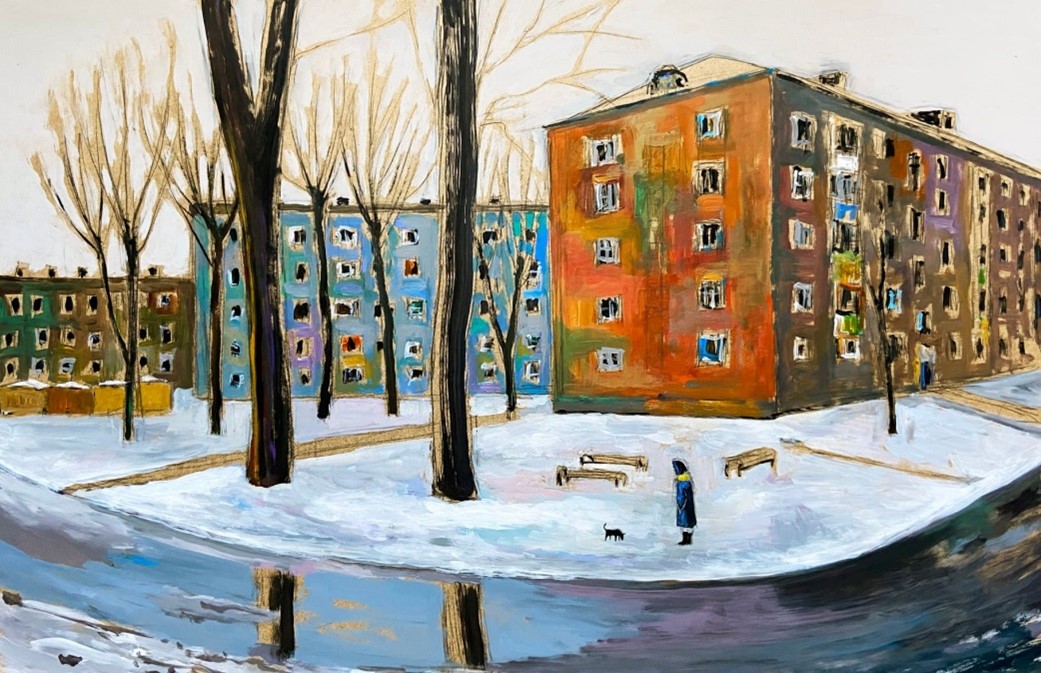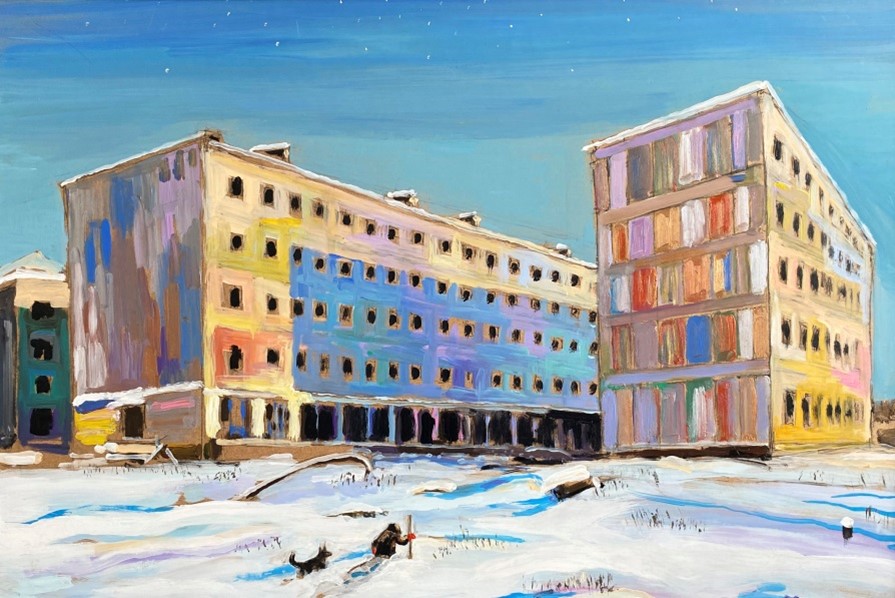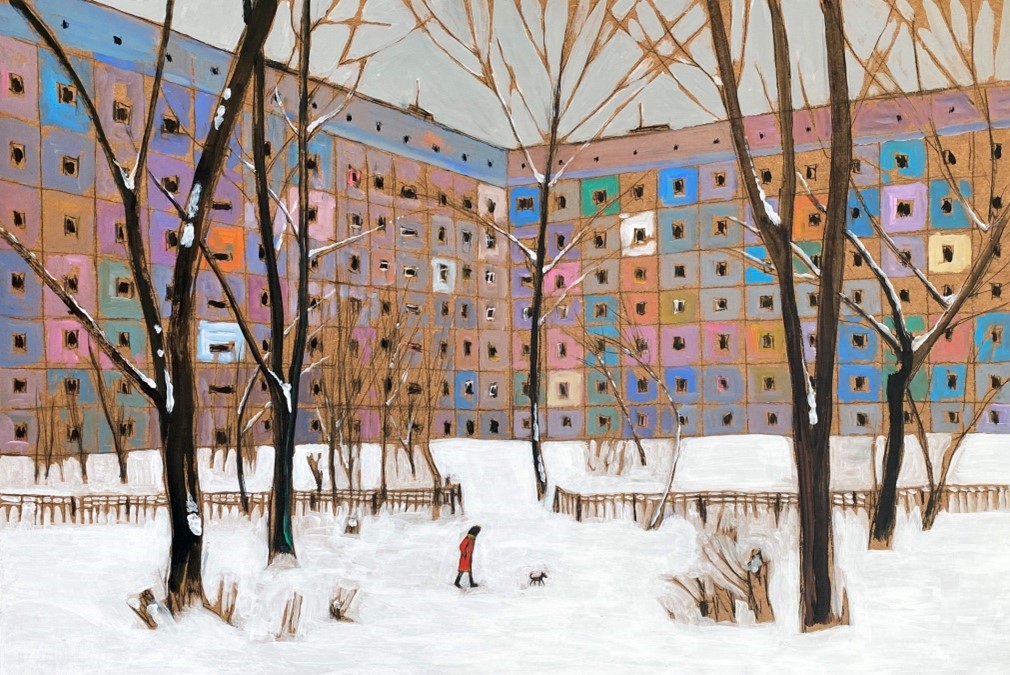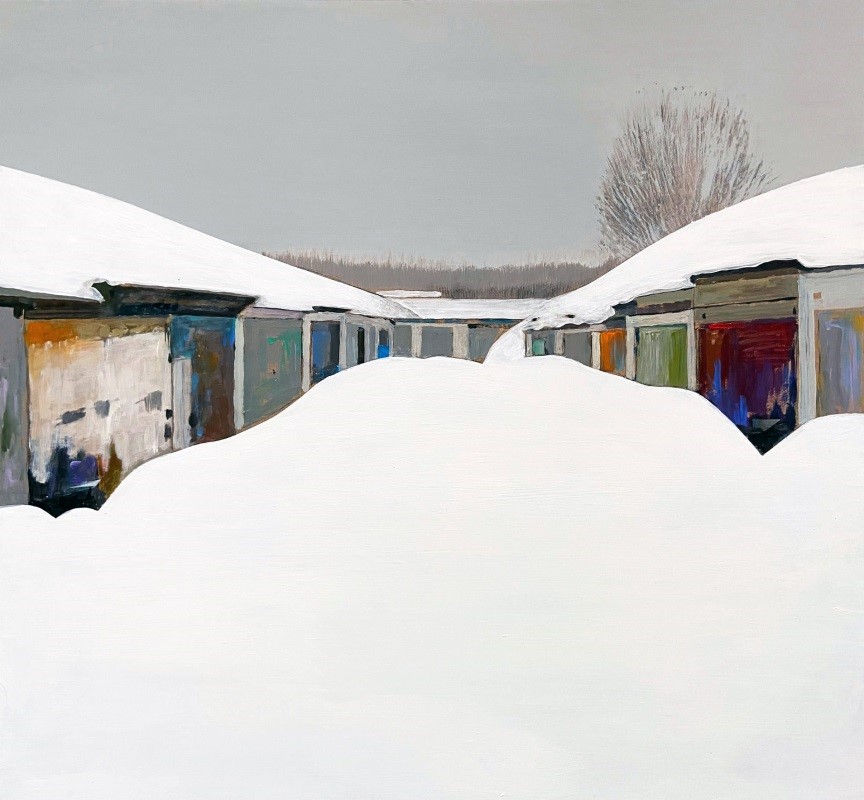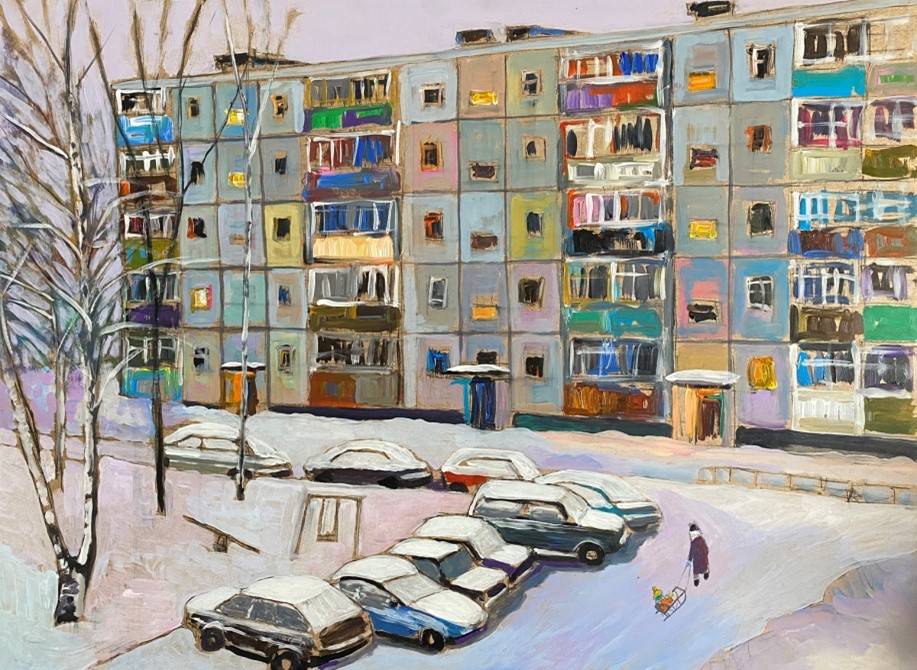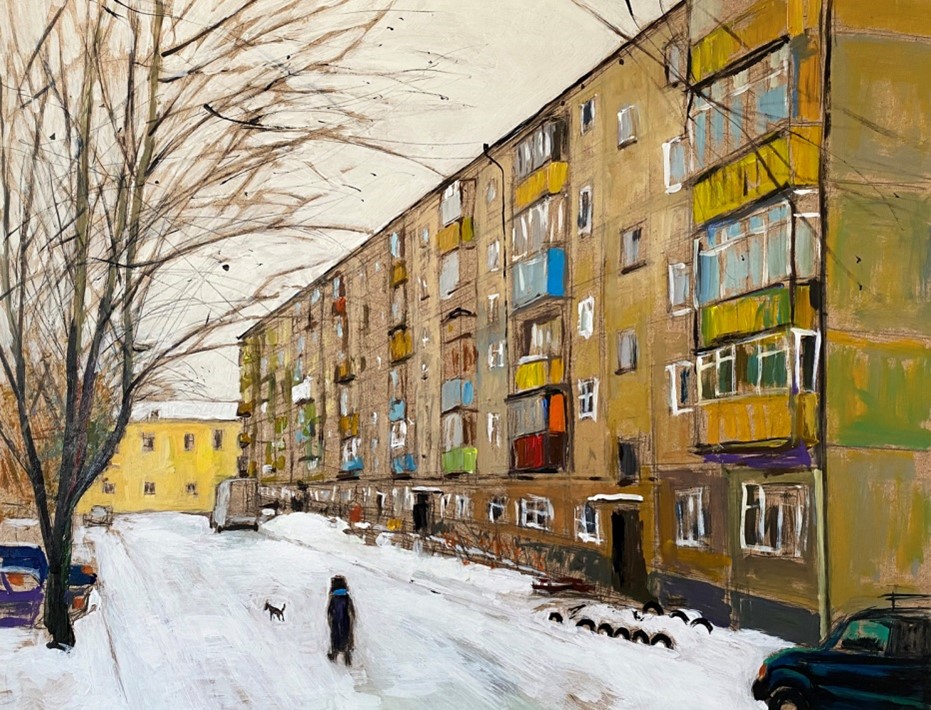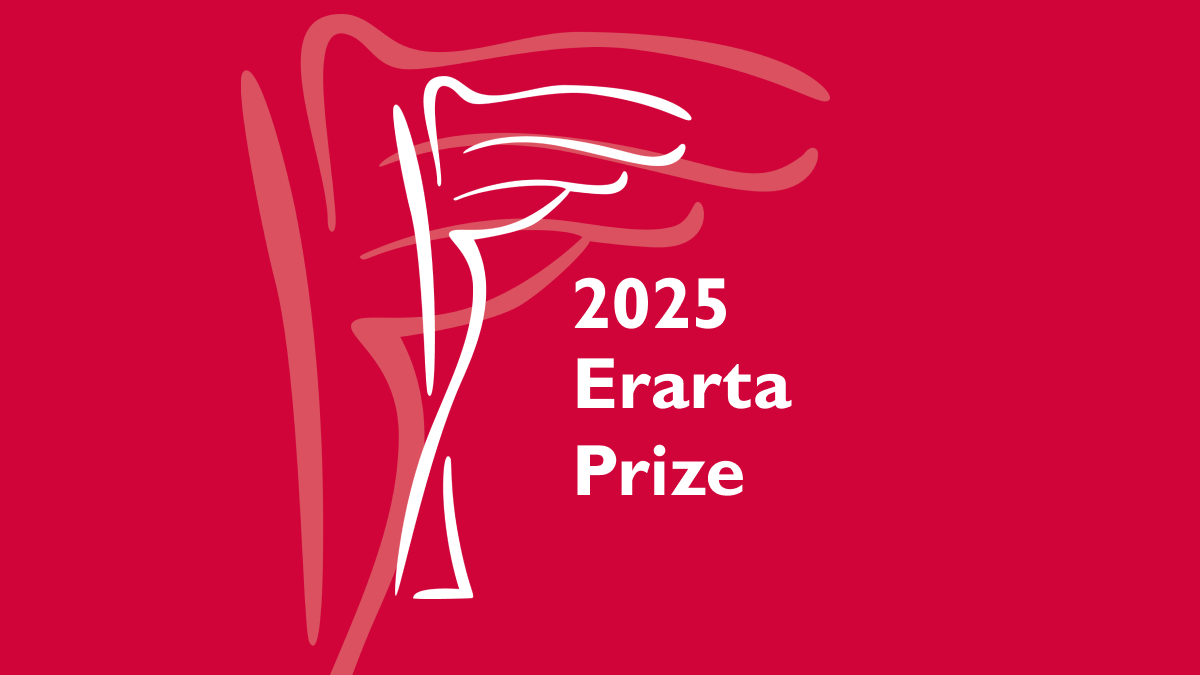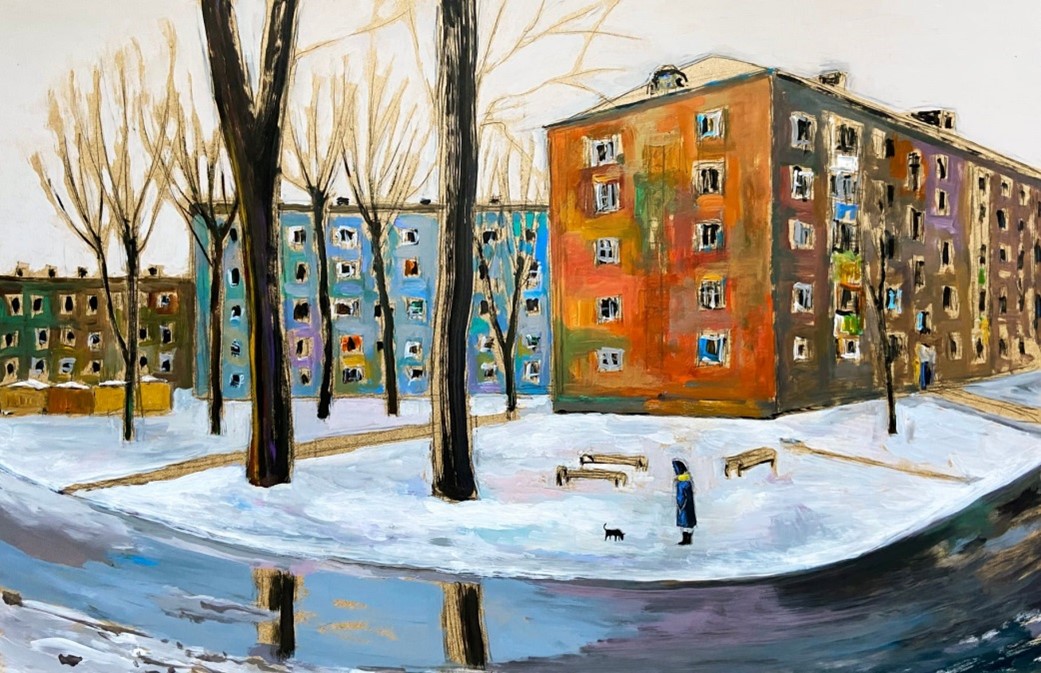Erarta Museum of Contemporary Art presents an exhibition by Ilgiz Gimranov, an artist who finds nostalgic beauty in the picturesque disorder of his home turf
-
Nearly 40 cityscapes from a series that the painter affectionately calls ‘Dear Krushchevkas’
-
Prefab building as the new archetypal home
-
Timeless scenes whose characters seem to be drifting from one century into another
A renewed enthusiasm about the standardised Soviet structures – prefab apartment buildings, schools, garages, and concrete slab fencing – started trending on social media in the 2010s: countless web users taught each other to nostalgically admire and find beauty in things that were formerly viewed as nothing but depressing. The prefab became the new archetypal home, replacing in this role the traditional wooden cottage, many of which fell victim to large-scale housing projects of the past.
Ilgiz Gimranov’s childhood was mostly spent in concrete-panelled apartment buildings colloquially known as khrushchevkas, which he depicts, and speaks of, with particular warmth. The artist adds a metaphysical dimension to the mundane, often presenting neighbourhood streets and courtyards as if seen from above, from a detached, god-like viewpoint. This perspective allows for a broad sweeping view of the goings-on below, without making much of the somewhat depressing utility features. Instead of camouflaging the garbage, unkempt patches of grass, and exposed pipelines, the painter romanticises these and suchlike unsightly details by shrouding them in twilight or covering them with fresh snow or delicate greenery.
The settings arranged by the artist play host to timeless and poignant scenes. His recurring characters – a boy with a dog and a woman leading a child by the hand – appear to be plodding along from one century into another. Quite fittingly, one of Ilgiz’s works is entitled Space Without Time. ‘Viewing Gimranov’s cityscapes as an integral whole, one gets the impression of an acutely relevant and well-organised artistic sensibility, rich in multilayered allusions, references, and critical analysis. [. . .] Humaneness shining through the depressing surroundings is the ages-old subject of the Russian art,’ notes the prominent Russian art critic Alexander Borovsky.
Standard low-rise housing developments similar to khrushchevkas are found the world over. For instance, in Helsinki such neighbourhoods are lush with greenery, equally enjoyed by the squirrels populating the trees and the Finns themselves: lounging on benches around entrances are the same jovial beer-loving talkative types one sees in Russia. It is, however, unlikely that the comfortable cosiness of these places would inspire the artist, the very meaning of whose philosophical narratives seems to lie in the loneliness of characters presented against the picturesque disorder of their home turf.
Interestingly enough, the cookie-cutter residential buildings painted by Ilgiz Gimranov are nonetheless stylistically varied: some appear tidy and serene, almost in the spirit of Socialist Realism, others grow old and ailing like their inhabitants, and there are still others that seem to have perished already . . .
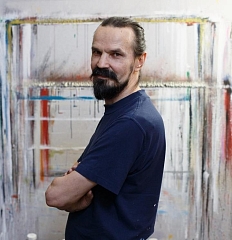
Born in Kazan in 1960, Ilgiz Gimranov studied monumental painting, mosaic, and sculpture at the artist Ildar Khanov’s workshop between 1978 and 1986. In 1987, Gimranov founded Arsenal Gallery, which subsequently became the lynchpin of unofficial art in Tatarstan. The artist’s works are in the collections of the State Russian Museum in St. Petersburg, Kazan Kremlin Historical, Architectural and Art Museum and Reserve, National Museum of the Republic of Tatarstan, and the Museum of National Culture in Kazan, as well as the ZAMAN Contemporary Art Museum in Ufa.

